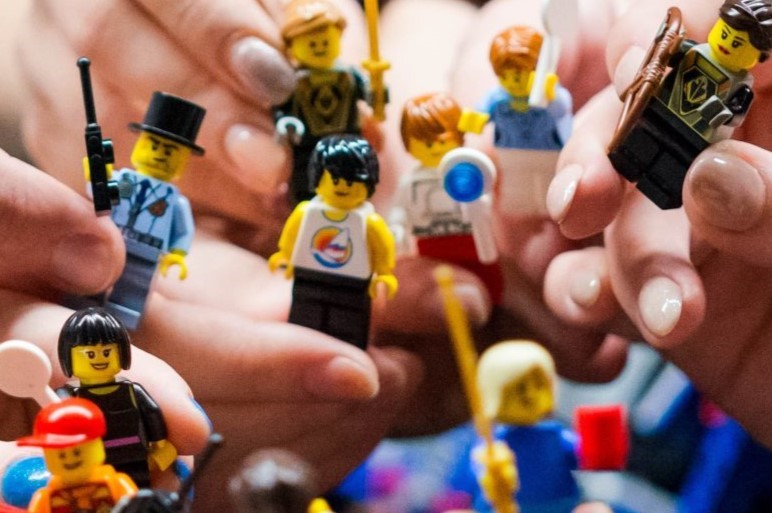
In 2018, the world’s attention was briefly united on a boy’s soccer team from Thailand. In a disastrous turn of events, the group who had been exploring a cave system after practice became stuck in a cavern when heavy rainfall flooded their escape path. An international team of rescue organisers, numbering up to 10,000 people including 100 divers, banded together to concoct and implement a plan to extract the team prior to approaching monsoonal downpours.
How did they do it? Some of these people had never met before, let alone worked together. And in two weeks they pulled off something spectacular. This is a prime example of something Harvard Business Professor Amy Edmondson calls teaming.
For Edmondson, teaming is the verb of team. It is the act of forming and working as a team – in real time and at pace. Her primary example of teaming is the rescue team who worked to free the Chilean miners in 2010 – we might look to the similar case of the Thai soccer team. In both circumstances, an international team of individuals with diverse expertise had to join together and figure out an immensely complex problem – quickly – in order to save lives.
But what do these examples have to do with modern organisations?
New Teams
Early on, Edmondson saw the trend towards looser organisational team structures where people are encouraged to work across the business to find diverse viewpoints and leverage expertise to achieve solutions. One obvious example of this in recent years has been Agile teams. However, this is something that is happening increasingly across industries as businesses seek to reap the benefits of cross-functional collaboration.
Increasing levels of specialisation, complexity, and interdependence in the world means we simply have to work together more in order to get the job done. No one person can have all the answers. Teaming is the way we can go about making these teams work and making them work quickly. However, often we find that there are certain default ways of thinking and behaving in groups, which do not serve us, and may even ‘block’ us from teaming well.
Old Shortcuts
When we come together with a group of people for the first time, it’s easy to fall into a range of traps and mental shortcuts which can actually counteract the benefit of diverse viewpoints. Here are three such examples which can readily arise in cross-functional groups:
- We adopt our own language and mental models, which blinds us to others
One of the major problems that we see in these sorts of teams is what Edmondson terms “professional culture clash” – where our different paradigms, ways of thinking and even language make it difficult to get on the same page with others. Think, for example, of healthcare providers in a hospital who are thrown together on a shift. While the hospital has an organisational culture, the different professionals coming together – doctors, nurses, radiologists, orderlies, administrators, janitors and technicians – each have their own professional subculture. If they each wield their unique ways of seeing the world and their professional shorthand unconsciously and inflexibly, this creates barriers to true collaboration. And this divide can grow even further in a world where, for example, divers are required to work with engineers and first responders.
- We cite and anchor upon information that is readily available, and search for commonalities too quickly
Assuming we are all speaking the same “language”, further challenges to teaming arise from how we tend to think and interact in group settings. In a group it’s easy to use recent and shared information or experiences as the heuristic for our thinking about a problem. Our ‘availability bias’ means that we tend to over-index on information that is readily accessible. In groups, our ‘common information bias’ guides us to share and focus on information that is already known by everyone, even when diverse information is available. In short, we end up focussing solely on what everyone already knows, rather than surfacing information that is unique or different.
- We value group harmony over robust debate
Finally, but certainly not least, is the strong tendency in groups towards groupthink. Groupthink is a well-studied psychological phenomenon where the human desire for connection and belong means groups tend to prioritise cohesion over critical or divergent thinking when reasoning or making decisions. The result: artificial harmony and low standards.
What these teams need is the curiosity to explore each other’s knowledge base fully, and the empathy to draw it out, through making an environment where people feel comfortable speaking up and experimenting.
Contemporary Ways of Working
So, how do we do it effectively, quickly and without (unproductive) conflict? What skills and mindsets do we need to bring to bear? And what are the actions we see coming up when we are ‘teaming well’?
The way we think sits in a feedback loop with our experiences and actions. As we try to start the process of building trust in these teams, we want to focus on key behaviours which we hope will then drive mindsets. In her research, Edmondson describes four “teaming elements.” For leaders, there is an opportunity to put in structural and cultural elements to encourage these behaviours which will in turn see our mindsets increasingly come to the fore. We can look to:
- Encourage naive questions and speaking up in meetings and check-ins to bring more thinking to the floor
- Fence off dedicated time for true collaboration and incorporate aids such as creativity games or tools for brainstorming
- Emphasise a test-and-learn approach by exploring multiple experimental approaches prior to converging on one and continuously iterating on the vision
- Reflect on the process as well as the outputs with the introduction of reflective exercises and feedback loops at key intervals during the project
In time, we will develop the key mindsets which we need to have front of mind for teaming to be successful:
- Curiosity – we are curious about both each other’s thinking and capabilities and the full variety of ways we can solve the problem.
- Passion – we have a real desire to get to the heart of the issue and find the best solution
- Empathy – we have a sense of wanting to know and understand each other’s experiences
Teaming is something that we often just think will happen automatically when a group of people are thrown into a room (or a cave) together. However, if we want to get the most out of each other and our work together, we will benefit from taking a more mindful approach to how we work. Most of all, that means operating with mindsets that value everyone’s perspectives and contributions, no matter how distant they seem from our own.
Need More Help?
Keen to find out more about how your organisation can develop “teaming” skills? Performance Frontiers are experts in helping foster cross-functional collaboration to leverage the magic of diverse viewpoints and expertise to achieve sophisticated solutions. Speak to Chris about how we can support you today.








